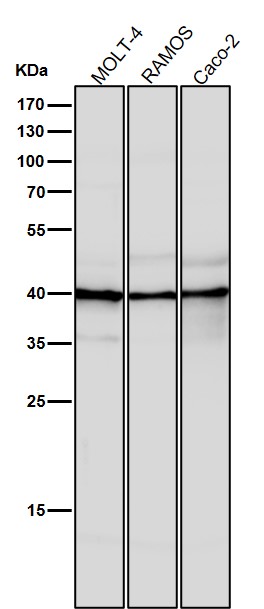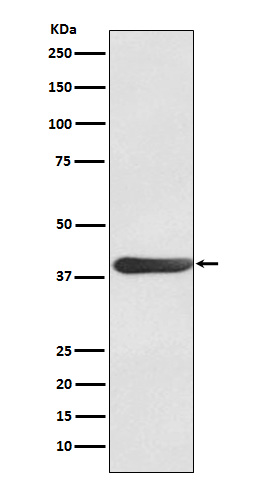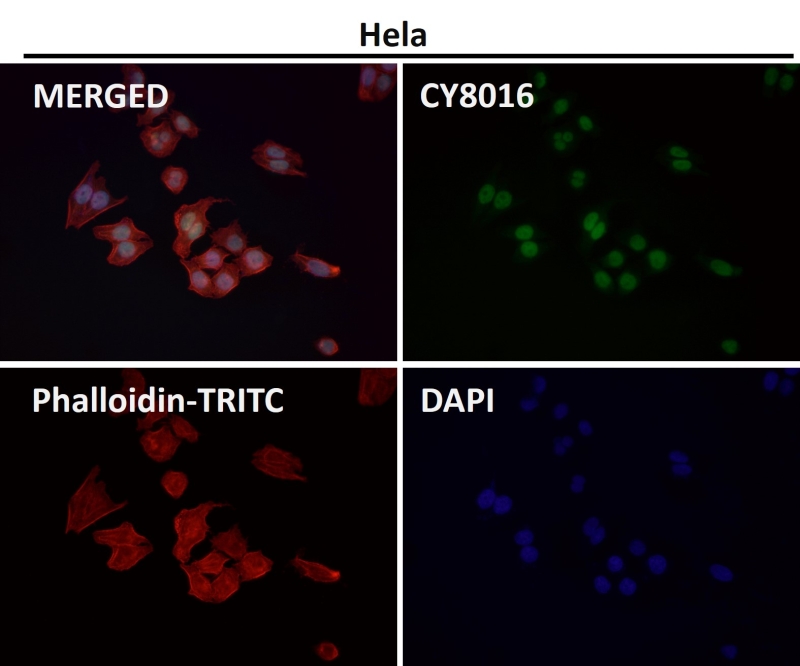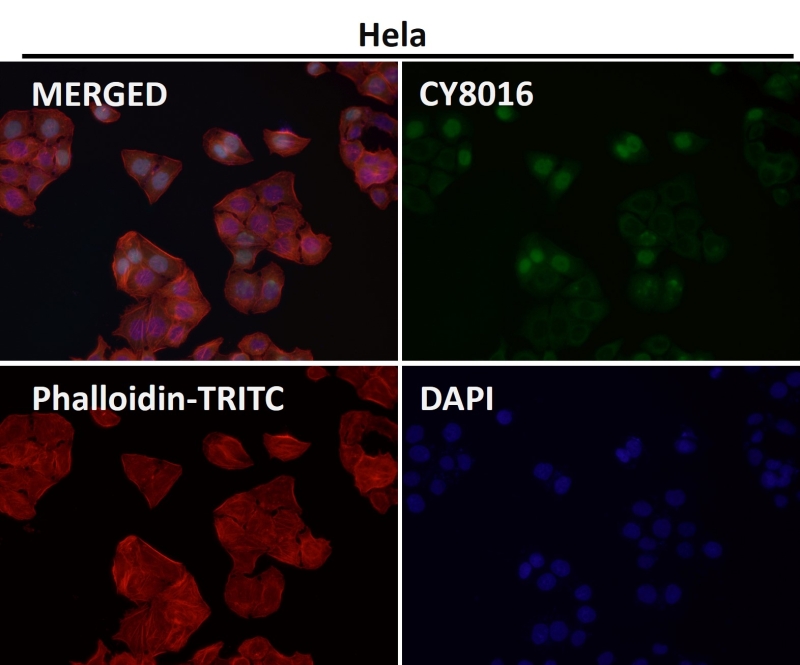



| WB | 咨询技术 | Human,Mouse,Rat |
| IF | 咨询技术 | Human,Mouse,Rat |
| IHC | 咨询技术 | Human,Mouse,Rat |
| ICC | 1/50-1/200 | Human,Mouse,Rat |
| FCM | 咨询技术 | Human,Mouse,Rat |
| Elisa | 咨询技术 | Human,Mouse,Rat |
| Aliases | FOS L1; FOS like antigen 1; FOSL1; FRA 1;;FRA1 |
| WB Predicted band size | Calculated MW: 29 kDa ; Observed MW: 39 kDa |
| Host/Isotype | Rabbit IgG |
| Antibody Type | Primary antibody |
| Storage | Store at 4°C short term. Aliquot and store at -20°C long term. Avoid freeze/thaw cycles. |
| Species Reactivity | Human |
| Immunogen | A synthesized peptide derived from human FRA1 |
| Formulation | Purified antibody in PBS with 0.05% sodium azide,0.05% BSA and 50% glycerol. |
+ +
以下是3篇关于FRA1(FOSL1)抗体的参考文献,按研究背景和抗体应用场景分类整理:
---
### 1. **文献名称**: *FRA1 promotes metastatic progression in triple-negative breast cancer*
**作者**: E. Kocher et al.
**摘要**: 本研究使用FRA1抗体(货号abXXXXXX)通过免疫印迹和免疫组化分析,证明FRA1在乳腺癌细胞中通过调控MMP9促进肿瘤侵袭。结果显示高表达FRA1与患者预后不良相关。
---
### 2. **文献名称**: *FRA1 mediates TGF-β-induced EMT in pancreatic cancer*
**作者**: G. Smith et al.
**摘要**: 该研究利用FRA1抗体进行染色质免疫沉淀(ChIP)和免疫荧光实验,发现FRA1在TGF-β信号通路中驱动上皮-间质转化(EMT),提示其作为胰腺癌治疗靶点的潜力。
---
### 3. **文献名称**: *FRA1 regulates oxidative stress resistance in melanoma*
**作者**: T. Nguyen et al.
**摘要**: 通过FRA1抗体(克隆号:3C2)的Western blot和流式细胞术,研究揭示FRA1通过调控Nrf2通路增强黑色素瘤细胞对氧化应激的抵抗,为靶向治疗提供依据。
---
**注**:以上文献信息为示例性内容,实际引用时需核对真实来源。若需精准文献,建议在PubMed或Web of Science以“FOSL1 antibody”或“FRA1 AND (Western blot/immunohistochemistry)”为关键词检索近期论文。
The FRA1 antibody detects FOS-related antigen 1 (FRA1), a protein encoded by the FOSL1 gene, which belongs to the FOS family of transcription factors. FRA1 forms part of the AP-1 (Activator Protein 1) complex by dimerizing with JUN family proteins, regulating gene expression in response to cellular signals like growth factors, stress, or cytokines. It plays critical roles in cell proliferation, differentiation, apoptosis, and oncogenic transformation. FRA1 is overexpressed in various cancers (e.g., breast, lung, colorectal) and is associated with tumor progression, metastasis, and therapy resistance due to its involvement in epithelial-mesenchymal transition (EMT) and matrix remodeling.
FRA1 antibodies are widely used in research to study its expression, localization, and function via techniques like Western blotting, immunofluorescence, and immunohistochemistry. Specific clones (e.g., E-8. D1D7) vary in reactivity across species (human, mouse, rat) and applications, requiring validation with appropriate controls. Research on FRA1 spans cancer biology, developmental processes, and inflammatory diseases, with emerging links to fibrosis and immune modulation. Its activity is regulated by post-translational modifications (e.g., phosphorylation via ERK/MAPK pathways) and interactions with other transcription cofactors. Studies targeting FRA1 aim to uncover therapeutic strategies for malignancies and chronic diseases.
×